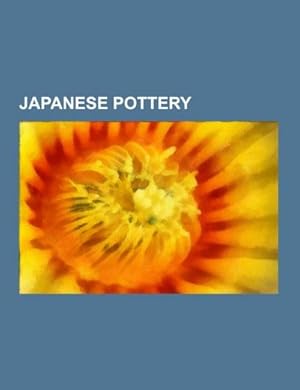9781157543374 (1 resultados)
Tipo de artículo
- Todo tipo de artículos
- Libros (1)
- Revistas y publicaciones
- Cómics
- Partituras
- Arte, grabados y pósters
- Fotografías
- Mapas
-
Manuscritos y
coleccionismo de papel
Condición
- Todo
- Nuevos
- Antiguos o usados
Encuadernación
- Todo
- Tapa dura
- Tapa blanda
Más atributos
- Primera edición
- Firmado
- Sobrecubierta
- Con imágenes del vendedor
- Sin impresión bajo demanda
Ubicación del vendedor
Valoración de los vendedores
-
Japanese pottery
Publicado por Reference Series Books LLC Mrz 2014, 2014
ISBN 10: 1157543375ISBN 13: 9781157543374
Librería: BuchWeltWeit Ludwig Meier e.K., Bergisch Gladbach, Alemania
Libro Impresión bajo demanda
Taschenbuch. Condición: Neu. This item is printed on demand - it takes 3-4 days longer - Neuware -Source: Wikipedia. Pages: 40. Chapters: Agano ware, Anagama kiln, Bizen Museums, Bizen ware, Chaki, Chawan, Dog , Hagi ware, Haji ware, Haniwa, Japanese pottery and porcelain, Japanese wheel throwing, J mon period, J mon Pottery, Karatsu ware, Kasama, Ibaraki, Kintsugi, Kyushu Ceramic Museum, List of Japanese tea ceremony equipment, Mingei, Nerikomi, Odai Yamamoto I site, Oribe ware, tani ware, Raku ware, Robert Yellin, Satsuma ware, Shigaraki ware, Shino (glaze), Shino ware, S deisha, S ma ware, Sue ware, Takatori ware, Tenmoku, Yayoi period. Excerpt: This is a list of articles used in Japanese tea ceremony. Please add utensils by category in English and subcategory in Japanese, in alphabetical order. For reasons of appearance and ease of reading, please do not italicize names of d gu listed here. This list is part of an expansion of the Japanese tea ceremony series of articles and category. In time it will expand to include articles on the major d gu listed. Equipment for tea ceremony is called d gu ( ; lit., 'tools') or more specifically chad gu ( ; 'tea tools'). Chad gu can be divided into five major categories: decorative items ( ); items for the tea-making and service ( ); items for the chakaiseki meal ( ); items used in the preparation room ( ); and items for the waiting room and roji garden ( ). A wide range of d gu is necessary for even the most basic tea ceremony. Generally, items which guests prepare themselves with for attending a chanoyu gathering are not considered as chad gu; rather, the term fundamentally applies to items involved to 'host' a chanoyu gathering. This article, however, includes all forms of implements and paraphernalia involved in the practice of chanoyu. A set of implements for tea ceremony. From the back: iron pot placed on furo, bamboo ladle and hibashi placed upright in shakutate, waste water container, blue and white porcelain mizusashi on bottom shelf of bamboo and wood tana. In Japan, cherished items are customarily stored in purpose-made wooden boxes. Valuable items for tea ceremony are usually stored in such a box, and in some cases, if the item has a long and distinguished history, several layers of boxes: an inner storage box (uchibako), middle storage box (nakabako), and outer storage box (sotobako). The storage boxes for tea implements are not tea equipment in themselves, but have a very important place in the practice of chanoyu for the inscriptions on them which serve to validate their history and other such important data. Chabako ( , literally ' 40 pp. Englisch.


